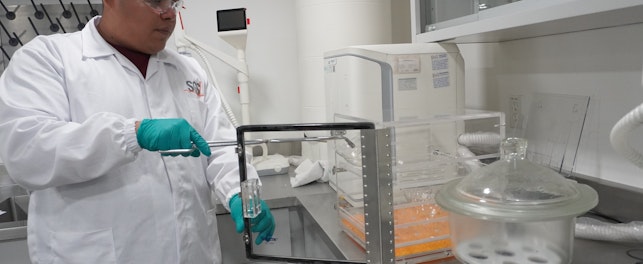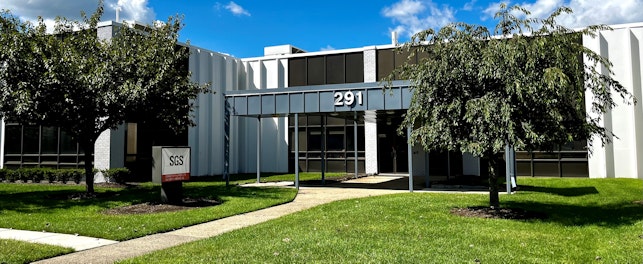Drones have recently been spotted undergoing trials for delivery operations in the United Kingdom.i The technology behind drones has advanced to a point where commercial use is expanding but, in many territories, regulations are only just beginning to keep pace.ii How can manufacturers ensure their products are safe and comply with market regulations?
The initial popularity associated with drones related to their use as toys. Business use has largely been a later development as the technology improved to a point where commercial application is both practical and financially viable. The US Federal Aviation Authority originally estimated it would take until 2022 to reach 450,000 commercial drones but that number has already been reached.iii
Commercial uses for drones now go beyond photography to include mapping, data gathering, tracking criminal suspects and delivery services. Part of the attraction is cost savings. Barclays’ analysts suggest these could easily reach USD 100 billion, which explains why the commercial drone market is expected to grow from USD 4 billion to USD 40 billion in the next five years.iv
Need for Regulation
Around the world, the growth in the drone market has not always been matched by regional regulations, and stories of drone misuse have increased in recent years. For example, in January 2019, flights were disrupted at Newark Airport, USA, when two drones where spotted flying nearbyv, and in September 2019, drones were used by protestors at Heathrow Airport.vi
Governments are beginning to respond. The US Department of Justice has recently signaled concerns over the security implications of drone use by updating its policies,vii and the UK Civil Aviation Authority has introduced a new register backed by fines of up to GBP 1,000.viii
In June 2019, the European Union (EU) became the first region to publish a comprehensive set of rules for ensuring the safe, secure and sustainable use of drones. They cover both commercial and leisure use and aim to foster innovation and growth in the sector while ensuring safety.ix These are Regulation (EU) 2019/945 and Implementing Regulation (EU) 2019/947.
In addition to operational requirements, these regulations also include technical requirements. These include defining the capabilities a drone must have to be flown safely. New drones must also be individually identifiable to allow authorities to trace a drone if necessary. Operators will be required to register their drones with authorities from June 2020x, and Member States will be required to convert existing certificates of remote pilot competency and their UAS operator authorizations or declarations to conform with Regulation (EU) 2019/945 by July 1, 2021.xi
The introduction of Regulations (EU) 2019/945 and 2019/947 puts the EU at the forefront of drone regulations. Manufacturers and suppliers need to be aware, however, of how other regions view drone use. In Barbados, Brunei, Cuba, Kuwait and Saudi Arabia, for example, their use is prohibited. In other countries, regulations vary greatly, making it important for manufacturers and suppliers to understand the enforced regulations in their target markets.xii
Standards
Currently there is no harmonized standard corresponding to (EU) 2019/945.
Stakeholders should be aware that, if a product is classified as a toy, it must also satisfy Directive 2009/48/EC, the Toy Safety Directive (TSD). Products not classified as toys should comply to the requirements in (EU) 2019/945 and the relevant essential health and safety conditions in Directive 2006/42/EC.
Drones must also comply with:
- Electromagnetic Capability (EMC) Directive – 2014/30/EU
- Radio Equipment Directive (RED) – 2014/53/EU
ISO 21384-3
On December 5, 2019, ISO released a new standard ISO 21384-3, Unmanned aircraft systems – Part 3: Operational procedures. This standard is the first of several in development that are designed to improve safety and airworthiness among unmanned aerial vehicles (UAV). In the fast-growing international drone market, these ISO standards will provide minimum safety and quality requirements, as well as criteria relating to coordination and organization in the airspace.xiii
Accessing the Marketplace
SGS has a global network of laboratories able to help manufacturers successfully access drone markets around the world. Our experts understand market regulations and can provide support during the development of safe and regulatorily complaint products. Our laboratories can perform high-quality testing on both toy and non-toy drones, including examination against RED and the EMC Directive. In addition, SGS experts can assist with testing against all aspects of the TSD.
Currently, no Notified Body has scope for (EU) 2019/945 and 2019/947. SGS is expecting to include both sets of requirements within its scope by the end of 2020.
To see related services, you may visit www.sgs.com/ee
For more information, please contact:
Powell Bao
Consumer and Retail
T: +86 0755 25328593
REFERENCES:
i Amazon is spotted secretly testing its Prime Air delivery drones
ii Deadline for UK drone registration approaches
iii How commercial drones became big business
iv How commercial drones became big business
v Drone sighting disrupts major US airport
vi Twelve protesters arrested over Heathrow drone threat
vii US tightens rules on drone use in policy update
viii https://www.itv.com/news/2019-11-27/drone-owners-face-1-000-fine-for-failing-to-sign-up-to-new-register/
ix EU wide rules on drones published
x EU wide rules on drones published
xi Document 32019R0947
xii Safeguards - Regulatory Requirements for Consumer UAVS In Japan, China and Singapore Updated
xiii Drone market set to take off with new ISO standard



